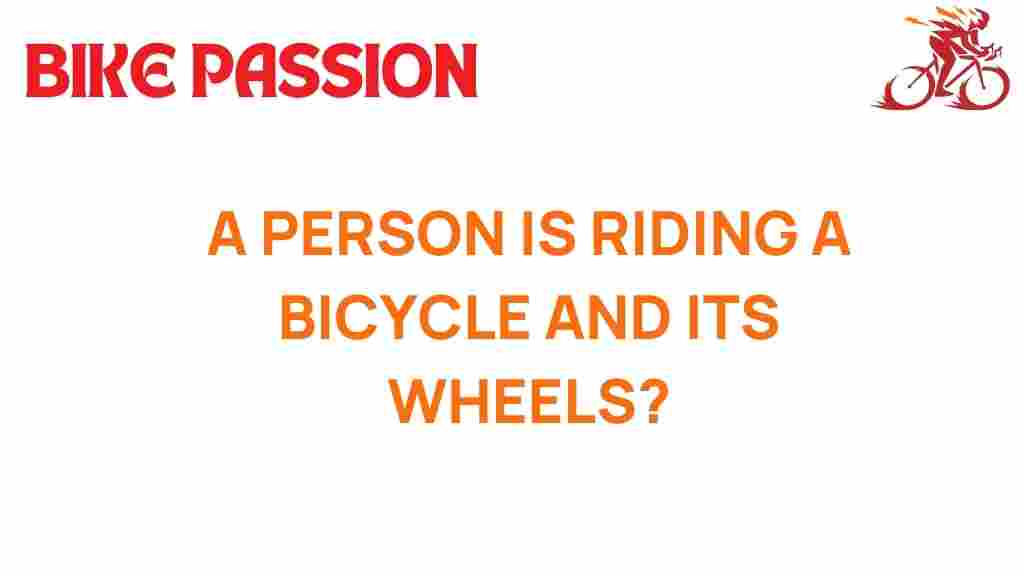Unraveling the Mysteries of Bicycle Wheels
Bicycle wheels are the unsung heroes of the cycling world, crucial for performance, safety, and the overall riding experience. They play a significant role in how a bike handles, accelerates, and maintains speed. Understanding the mechanics of bicycle wheels can not only enhance your cycling adventures but also help in proper bike maintenance. In this article, we will delve into the various aspects of bicycle wheels, including their types, technology, maintenance tips, and how they influence your cycling mechanics.
The Anatomy of Bicycle Wheels
A bicycle wheel consists of several key components that work together to provide a smooth and efficient ride. Here’s a breakdown of the essential parts:
- Rim: The outer part of the wheel that holds the tire in place.
- Spokes: Thin rods that connect the hub to the rim, providing support and structure.
- Hub: The center part of the wheel that houses the axle and allows the wheel to rotate freely.
- Tire: The outer layer that comes in contact with the ground, providing traction and cushioning.
- Valve: A component that allows for inflation and deflation of the tire.
Types of Bicycle Wheels
Bicycle wheels come in various types, each designed to meet specific cycling needs. Understanding these types will help you choose the right wheel for your riding style:
- Road Wheels: Lightweight and aerodynamic, ideal for pavement cycling.
- Mountain Bike Wheels: Designed for durability and stability on rough terrains.
- Hybrid Wheels: A versatile option, balancing between road and mountain bike features.
- Tandem Wheels: Built to support two riders, offering extra strength.
- Cruiser Wheels: Wider and more comfortable, perfect for leisurely rides.
The Role of Tire Pressure
Tire pressure is a critical aspect of bicycle wheels that directly affects performance and safety. Here’s why maintaining the right tire pressure is essential:
- Ride Comfort: Properly inflated tires provide a smoother ride by absorbing shocks.
- Rolling Resistance: Correct tire pressure optimizes rolling resistance, allowing for better speed and efficiency.
- Handling: Adequate pressure ensures better grip and handling, especially in corners and on uneven surfaces.
To find the recommended tire pressure for your bike, check the markings on the tire sidewall or consult your bicycle manufacturer. Regularly check your tire pressure and adjust it according to your riding conditions.
Understanding Cycling Mechanics
To fully appreciate the performance of bicycle wheels, it’s essential to understand the basic mechanics of cycling. Here are some key concepts:
- Force and Motion: The force exerted on the pedals is transferred through the drivetrain to the wheels, propelling the bike forward.
- Weight Distribution: The placement of weight on the bike affects how the wheels perform, impacting speed and stability.
- Aerodynamics: The shape and design of the wheels can influence drag and speed, especially in competitive cycling.
Technology in Bicycle Wheels
Advancements in technology have significantly improved bicycle wheel performance. Here are some innovations to consider:
- Carbon Fiber Rims: Lightweight and stiff, enhancing speed and responsiveness.
- Disc Brakes: Provide better stopping power and performance in various weather conditions.
- Tubeless Tires: Eliminate the need for inner tubes, reducing the risk of flats and allowing for lower tire pressure.
Bike Maintenance for Optimal Wheel Performance
Regular maintenance is crucial for keeping your bicycle wheels in top condition. Here’s a step-by-step guide to ensure optimal performance:
1. Inspect Regularly
Check your wheels for any visible damage, such as cracks, dents, or bent rims. Look for loose spokes and ensure they are properly tensioned.
2. Clean the Wheels
Use a soft brush and mild soap to clean the rims and tires, removing dirt and debris that can affect performance.
3. Check Tire Pressure
Use a pressure gauge to check the tire pressure before every ride. Inflate the tires to the recommended PSI.
4. Lubricate the Hubs
Apply lubricant to the hub bearings to reduce friction and ensure smooth rotation.
5. Replace Worn Tires
Inspect tire tread for wear. Replace tires that are worn down to ensure safety and performance.
Troubleshooting Common Wheel Issues
Even with regular maintenance, you may encounter issues with your bicycle wheels. Here are some common problems and their solutions:
- Flat Tires: Check for punctures or leaks. If found, patch or replace the tire.
- Wobbling Wheels: This may indicate a bent rim or loose spokes. Check spoke tension and straighten the rim if necessary.
- Noise from Hubs: If you hear grinding noises, it may be time to lubricate or replace the bearings.
Enhancing Your Riding Experience
The right bicycle wheels can significantly enhance your riding experience, whether you’re commuting, racing, or embarking on an adventure. Here’s how to choose wheels that suit your needs:
- Consider Your Riding Style: Choose wheels that match your cycling activities, whether it’s road cycling, mountain biking, or casual rides.
- Test Different Types: If possible, try different wheel types to see which one feels best for you.
- Invest in Quality: High-quality wheels may come at a higher price but can offer better performance and durability.
Adventure Awaits with the Right Wheels
With the right bicycle wheels, you can take your cycling adventures to new heights. Whether you’re exploring scenic trails, tackling challenging terrains, or cruising through urban landscapes, the right wheels will keep you rolling smoothly. Remember to prioritize maintenance and stay informed about the latest technology to enhance your performance.
Conclusion
Understanding bicycle wheels is essential for every cyclist. From their anatomy and types to maintenance and troubleshooting, the knowledge of bicycle wheels can greatly impact your cycling experience. By focusing on factors like tire pressure, cycling mechanics, and the latest technology, you can ensure that your bike remains in top shape for all your adventures. So, get out there, keep your wheels spinning, and enjoy the ride!
For more information on bike maintenance tips, check out our maintenance guide. To explore the latest in bicycle technology, visit this resource.
This article is in the category Gear and created by BikePassion Team
